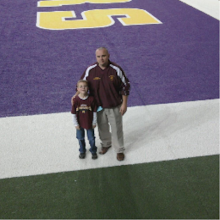It’s not about being right; it’s about doing the right thing. (Douglas Wheeler)
About Me
Tuesday, November 30, 2010
Technology with Intention
Tuesday, November 9, 2010
Wikis in the Classroom
Are Your Students Using Wikis to Strengthen Vocabulary Skills?
Got that bulletin board? Got that word wall? Got a few posters with pictures and words around your classroom? Do students keep a notebook, graphic organizers, or flashcards of important words?
What about wikis?
Yes, wikis.
A wiki is a website of one or more pages that allows people to add and edit content. The most famous wiki is Wikipedia, that online encyclopedia that anyone can add and edit content. While the issue of using Wikipedia for research may be controversial, my focus here is creating your own wikis so students can generate their own content for classroom purposes.
If your district doesn't provide a place to create wikis, lots of educators create wikis on websites such as PBWorks and Wikispaces.
Wikis are a powerful instructional tool for students to develop and practice vocabulary.
Why? When I learned about wikis a few years ago, as a school based technology specialist, I needed to find a way to highlight the instructional value of using wikis so I could convince other teachers to try this new technology.
During that time, building vocabulary using Marzano's research was a major focus in my district. Although technology was not always included in the strategies, using wikis fit almost all of the strategies to promote vocabulary.
What if the students collaboratively developed a class wiki for their content vocabulary?
This is how it works. You assign each student a word or group of words to research. After they have completed their research, they create a page for each word in the class wiki. When students are finished, the class will have their own wiki showing their classroom vocabulary.
It's like a "mini Wikipedia" of content vocabulary for your class that can grow throughout the year!
Here are some of Marzano's vocabulary strategies and why wikis are very useful.
1) Students restate the explanation of the new terms in their own words.
Wiki application: Give the student a vocabulary word(s) and instruct them to research and write their word(s) in a way that is understandable to their friends. This encourages them to restate their explanation in their own words.
2) Students create a non-linguistic representation of the term.
Wiki application: Tell your students that they have to include a picture that illustrates their word. A picture is non-linguistic! (This is terrific for geometry!)
3) Students periodically do activities that help them add to their knowledge and vocabulary terms. Activities can include comparing similarities and differences, classifying, metaphors, and analogies.
Wiki application: Tell your students to give both examples and non examples of their vocabulary word. Or, they can use analogies or metaphors if your subject allows it. (Advanced user tip: using the "Tags" feature in a wiki for each definition is actually requiring students to classify their words. Neat!)
4) Students discuss the terms with one another.
Wiki Application: Here is where things get fun. Since it's a wiki, students can edit each other's definitions. With your guidance, after students have completed their own words, you can have them look up each other's words, analyze what is written, and edit to improve the definition.
Think about the higher level skills students learn and practice as they build on what their classmates have published.
5) Students are involved with games that allow them to play with the terms.
Wiki Application: When your students have finished creating the wiki, you now have a permanent and readily accessible online resource for content vocabulary. What kinds of activities for review, remediation, or enrichment can you create that will encourage your students to access their wiki regularly throughout the year? Lots of possibilities!
And just imagine how useful these wikis will be when you start reviewing for those standardized tests. Your students and parents will have all their important words for the year all in one place.
Using Graphic Organizers to Structure and Format that Wiki
You can use graphic organizers to help students with their research and note-taking. One helpful graphic organizer that I like is the Frayer Model, which requires students to write the definition, characteristics, examples, and non examples. Here are a bunch of Frayer Model examples.
Or, create/edit your own version of the Frayer model using the Marzano strategies you find helpful.
Yes, the Frayer model has been around since the 70's, but it's still terrific for keeping students focused, and it will ensure that all students have the same type of information in their definitions. When you have students do the research, they should fill out their information either electronically or on paper using the good 'ol Frayer format before they edit their wiki pages. This will provide consistency in the structure, format, and content of the definitions.
So, developing vocabulary is in one instructional meaningful way to use wikis.
If you teach a subject that uses vocabulary, add wikis to your arsenal of vocabulary activities!
